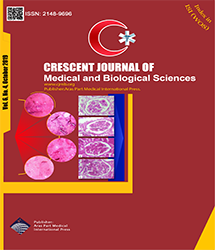
| Original Article | |
| Modelling Childbearing Desire: Comparison of Logistic Regression and Classifcation Tree Approaches | |
| Arezoo Bagheri1, Mahsa Saadati1 | |
| 1Statistical Methods and Population Modeling Department, National Population Studies and Comprehensive Management Institute, Tehran, Iran | |
|
CJMB 2019; 6: 487–493 Viewed : 34773 times Downloaded : 6014 times. Keywords : Fertility Preferences, Child, Women, Decision Trees, Logistic Regression |
|
| Full Text(PDF) | Related Articles | |
| Abstract | |
Objectives: According to health surveys, population growth and total fertility rate (TFR) are decreasing in Iran. The economic and social factors in addition to the changing values and attitudes in the Iranian society have had a major impact on fertility decisions and the actions of families, especially women towards childbearing. This is an important issue for policymakers and many researchers in demography and public health thus the investigation of factors that affect low TFR is considered as a necessity. Materials and Methods: The classifcation and regression trees (CART) algorithm, as one of the most applicable classifcation trees, along with logistic regression was applied to model the tendency of 4898 women for childbearing in provinces with a TFR lower than the replacement level in Iran. The secondary data were then analysed by SPSS version 24.0. Results: Based on these two approaches, it was concluded that despite the CART algorithm, logistic regression suffers from some shortcomings including the diffcult interpretation of three levels of interactions while not containing a specifc method for handling the outliers. In addition, CART results demonstrated that women’s children ever born (CEB), age, and opinion had signifcant impacts on their desire to have a child. The groups encompassing “10-39-year-old women with CEB≤2” and “40-49-year-old women with positive attitudes towards childbearing” desired to have more children while “women with CEB ≥3” showed no tendency for childbearing. Conclusions: In general, the results revealed that adopting policies for changing women’s views on childbearing and creating the necessary resources for preventing the delays in marriage are regarded as important actions toward altering fertility rates. Another important conclusion is applying the CART algorithm as a convenient method for classifying demographical data. |
Cite By, Google Scholar
Online Submission System
 CJMB ENDNOTE ® Style
CJMB ENDNOTE ® Style
 Tutorials
Tutorials
 Publication Charge
Medical and Biological Research Center
About Journal
Publication Charge
Medical and Biological Research Center
About Journal
Aras Part Medical International Press Editor-in-Chief
Arash Khaki
Deputy Editor
Zafer Akan


















